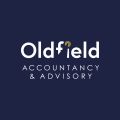A major change is coming in how businesses account for leases. If your company leases vehicles, property, or other assets, the way they appear in your financial statements could look very different from 2026.
Snapshot Summary
Under new FRS 102 rules, operating leases must be reported as both a asset and as a liability. The transition requires identifying leases, collecting data, applying discount rates, and creating new disclosures. Short-term and low-value leases are exempt, and FRS 105 (micro-accounts) clients likely unaffected. It's always best to check with your accountant before you make any changes.
If your company leases vehicles, property, or other assets, the way they appear in your financial statements will look very different from 2026.
What’s changing?
For accounting periods commencing on or after 1 January 2026, FRS 102 introduces new lease accounting rules. Almost all leases previously treated as “off balance sheet” should now have a corresponding right-of-use asset, and should be recognised as a liability.
This affects:
- Property: Warehouses, offices, retail space, etc.
- Vehicles: Contract hire vans, delivery fleets, cars, etc
- Equipment and machinery: Production machinery, IT hardware, forklifts, etc
- Other assets: Material to operations and not low-value or short-term.
Short-term and low-value leases may be exempt, and FRS 105 (micro-entities) clients are not impacted.
What does this mean for business owners?
Implementing the change isn’t just a line in the accounts, it’s a process of:
- Collating information contained within lease contract agreements
- Accounting for renewals, CPI/RPI uplifts, and options
- Calculating discounted liabilities
- Recording transition adjustments
- Preparing new disclosures and policy notes
The introduction of FRS 102 operating lease reform will create new tasks for businesses as they approach their year-end reporting. One of the most immediate challenges will be the transition process, which requires companies to create in-depth lease registers. This aligns with the continuous improvement and developement of a companies internal controls and processes.
Businesses will also need to implement processes to manage reconciliations and ensure that the required disclosures are consistently met. This will demand careful attention to detail and regular monitoring throughout the year, not just at the reporting date.
In addition, the reforms are likely to require staff training so that finance teams fully understand the new requirements. Many organisations need to ensure they are ready to handle the changes. Your accountant can help guide you through this process.
Transition
When adopting the new lease accounting rules, businesses need to consider bringing leases onto the balance sheet. FRS 102 requires a multi-step appoach;
- Collate all lease documentation
- Keep all lease agreements in a central place for storage and maintenace.
- Separate out low value and short-term leases.
- Recognise a right-of-use asset and corresponding liability
- Set up a lease liability working paper/schedule.
- Apply appropriate discount rates (so that the asset is recognised at net present value).
- Add the right-of-use asset to the fixed asset register.
- Split the lease liability between current and non-current liabilities.
- Post monthly journals
- Reduce the lease liability by any payments made.
- Recognise the implicit interest amount in the profit or loss account.
- Depreciate the right-of-use asset over the remaining lease term.
Note: Prior year restatments are not permitted under FRS 102. In the year of transition there may be a disconnect between current year and prior year reporting.
Key considerations:
- Your opening balance sheet will change, potentially affecting ratios, covenants, and borrowing capacity.
- The choice impacts the transition effort: full retrospective is more work-intensive, modified retrospective is simpler.
- Most SMEs opt for the modified approach to reduce disruption and costs, while ensuring compliance.
What this means for you
If your company has multiple leases, such as property, vehicles, or equipment, the transition could mean a significant one-off cost and more ongoing administration. Acting early ensures you won’t be caught off guard. It’s also important to brief lenders, boards, and other stakeholders, since the new accounting may affect reported financial health even though the underlying business hasn’t changed.
How can Oldfield help you?
If you’d like help understanding how these changes could impact your business or book a call with one of our team, please reach out using the form below, and we’ll be in touch to guide you through the updates and ensure you remain fully compliant.
Frequently Asked Questions
Q:
A:
Q:
A:
Q:
A:
Q:
A:
Q:
A:
- Record new journal entries and carry out reconciliations
- Ensure full compliance with disclosures and policies
Remember, if this is something you are concerned about, Oldfield are happy to guide you through the process.
Please note: This article is for general information purposes only and was correct as at the time of writing (06/10/25) and does not constitute financial advice. Tax rules and legislation are subject to change, and their application depends on your individual circumstances. We recommend seeking advice from a suitably qualified tax adviser, and where relevant, an FCA-authorised financial planner. Any lists and details provided above are not exhaustive and are not intended to be full and complete guidance. No action should be taken without consulting detailed legislation or seeking independent professional advice. Therefore, no responsibility for loss occasioned by any person acting or refraining from action as a result of the material contained in this article can be accepted.
Share Article
You give us 30 minutes of your time. We'll give you growth and a plan
It's easy to book an initial consultation - just provide some brief details, and your preferred date and time, and we'll reply by email to confirm your appointment.
Contact us





